Welcome to Cariati, a picturesque medieval village in the province of Cosenza overlooking the Ionian Sea. We are in Calabria, in what was once Magna Grecia, a land of culture and enchanting views.
Between the deep blue of the sea and the Calabrian countryside, Cariati enchants its ancient village with fine buildings, its relaxed and lively atmosphere, and the courtesy of the Cariati people. Beautiful sandy beaches offer the opportunity to relax and enjoy the sun and the Calabrian Sea.
Discover Cariati, the village where culture, local traditions and natural beauty blend perfectly.

What to see and do in Cariati
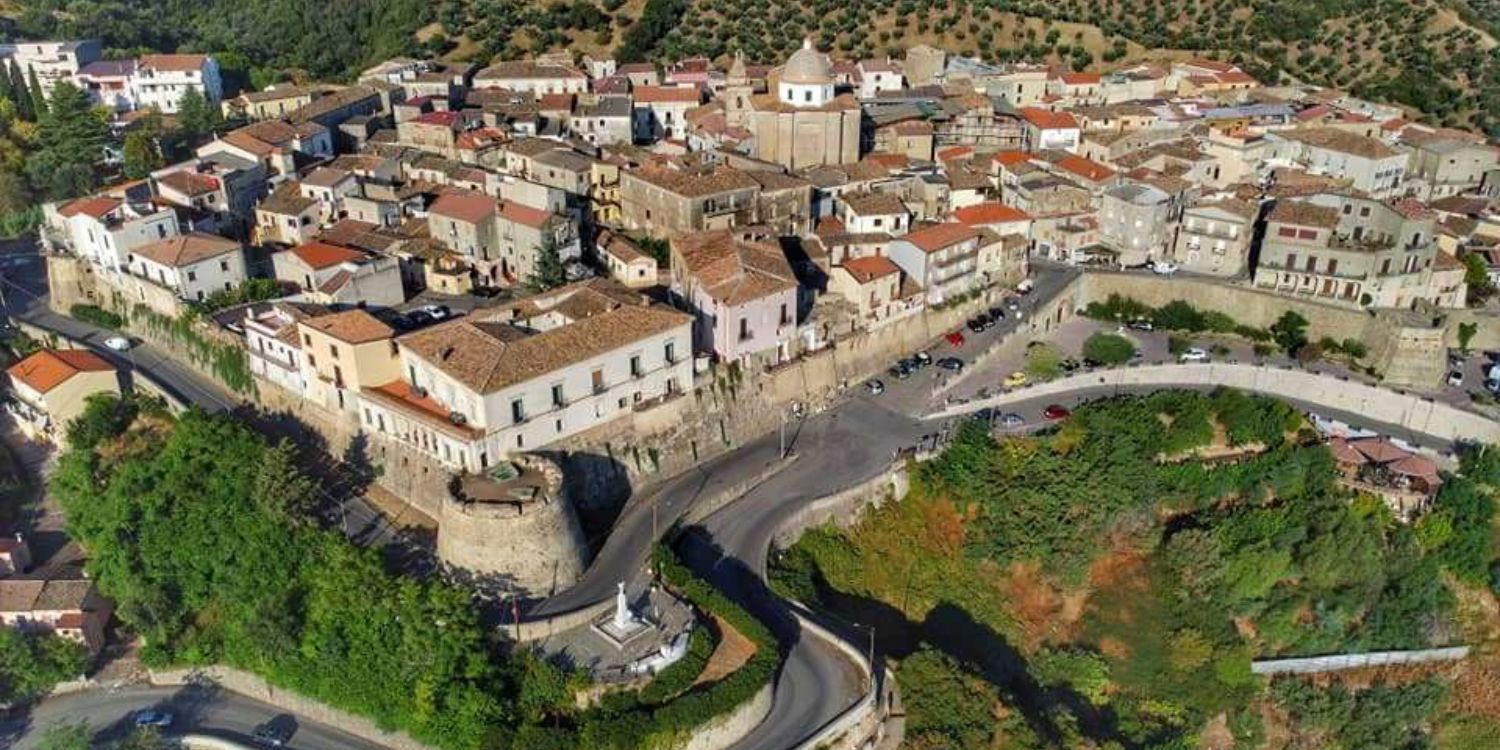
Set on the Costa dei Saraceni (Saracen Coast), Cariati is a village that strikes you immediately. Within the still intact city walls, amidst narrow streets, small squares, noble palaces and ancient churches, you can admire one of the best-preserved historical centres in Calabria, where you can still breathe in the authentic atmosphere of times gone by.
Just a few steps from the old town, you will find the Porticciolo, the seafront promenade and the fine sandy beaches for a dip in the crystal-clear waters of the Ionian Sea and much relaxation.
In addition, cultural events, religious festivals and fairs are held in all seasons. Participating in these events gives the opportunity to learn about the ancient local traditions strongly felt by the people of Cariati.
In addition to history, traditions and nature, there is no lack of typical Calabrian products and tasty Cariati dishes, first and foremost ‘la Ghiotta’ and the delicious Cariatese-style stuffed aubergines.
Cariati is a perfect place for those seeking a holiday of culture and history, relaxation and nature in a pleasant environment in contact with the locals.
Discover what to do and see in Cariati, a little-known jewel of Ionian Calabria that will win you over!
Discover more about CariatiOrigin and history of Cariati
Cariati, located on the Ionian coast of Cosenza, halfway between Sibari and Crotone, is part of the geographical, historical and cultural area of ancient Magna Graecia.
The town has an ancient and significant history.
Between the 4th and 3rd centuries BC, the ancient population of the Brettii populated its territory.
Its origin dates back to the Greco-Roman period when there was a Roman settlement (Paternum) in the territory of the present municipality, which was abandoned in the early Middle Ages due to Saracen raids and malaria.
During this period, the inhabitants moved to the hill where the old town of Cariati now stands, giving birth to the actual Cariati.
We owe the first fortifications around the hill where the old town stands to the Byzantines, who already controlled several areas of the territory and needed to defend their domains.
Due to its strategic position and the defensive apparatus built by the Byzantines between 963 and 969, Cariati became a stronghold in early medieval Calabria, along with Rossano, Gerace and Reggio Calabria.
In 1302, Cariati came under the control of the Ruffo family, which administered it until the second half of the 15th century.
Thanks to the Ruffo family, we owe the 15th-century walls, built on the remains of the Byzantine fortification, that still surround the medieval town.
Furthermore, it was through the initiative of Covella Ruffo that Cariati became a diocese in 1437.
After the Ruffo family, several important feudal families administered Cariati which grew until it obtained the title of Principality.
The period between the 15th and 18th centuries was complicated as Cariati was repeatedly attacked by Turkish and Barbary pirates moving around the Mediterranean.
The period from the seventeenth to the nineteenth century was more positive and flourishing.
During this time were built the city's most important religious and historical buildings, that can be admired within the city walls.
A walk through the historic centre
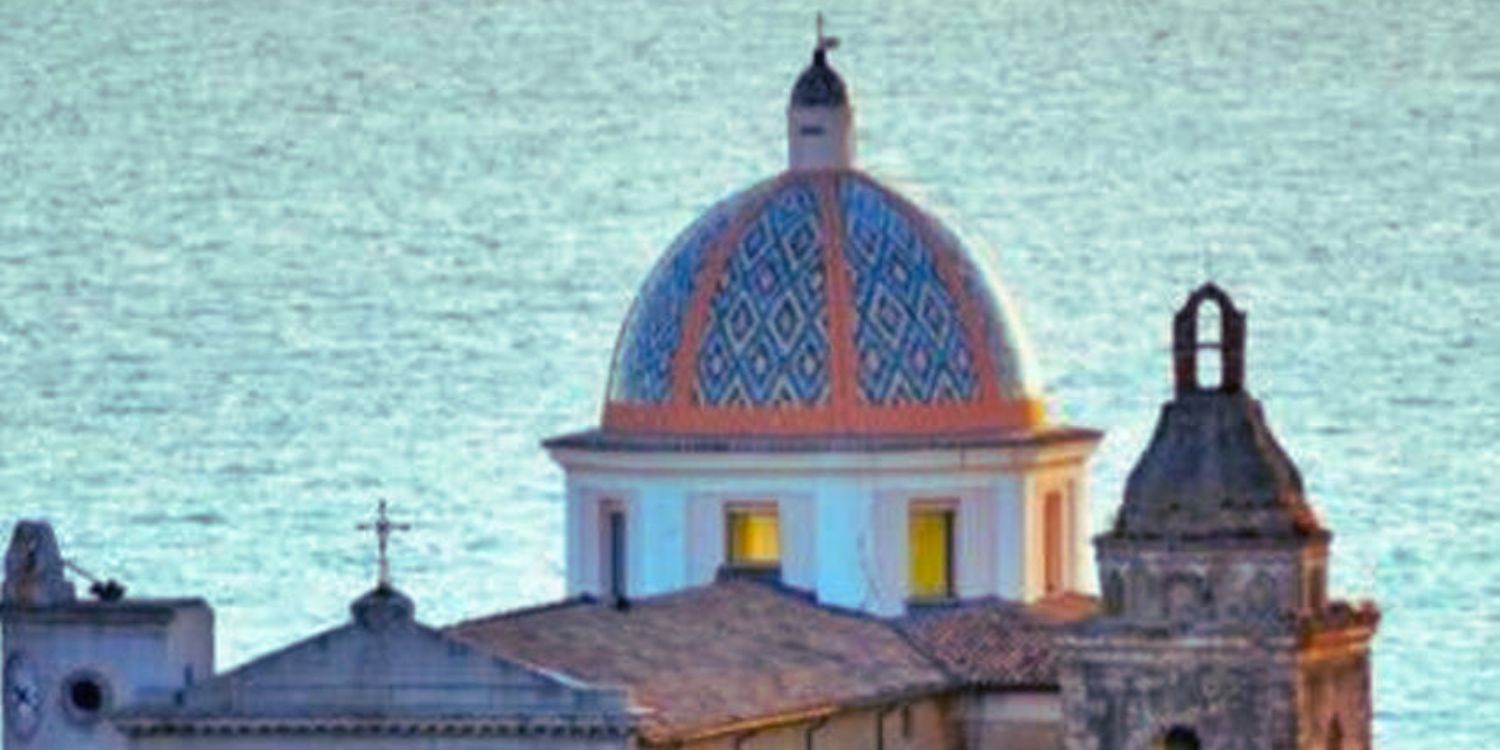
A walk through the historic centre is a must because the historic centre of Cariati is one of the most evocative and well-preserved in Calabria.
Even today, one enters the old town from Porta Pia. This is the only gate still visible and intact, part of the 1 km-long medieval town wall, totally intact throughout its perimeter.
The city walls are the most important and symbolic architectural element of Cariati. They are characterised by eight massive towers.
While walking inside the city walls, among alleys adorned with murals, stone houses and small squares, you will admire several valuable historical buildings.
First, you will see the Cathedral, a construction of medieval origin that, after renovations in the 19th century, became a fine example of a Calabrian neoclassical church.
There are also other small 17th-century churches and ancient buildings like the seminary and the Episcopio and several aristocratic palaces belonged to noble and influential families.
Just outside the walls is another historically and artistically important church: the Church of the Observants. This church dates back to the first half of the 15th century, when Cariati was ruled by the Ruffo family, and is in late Gothic style.
After a nice cultural walk, all that remains is to enjoy the old-world atmosphere of this village and the splendid views of the Ionian Sea!
A visit to the Museum of the Sea, Agriculture and Migration
A fascinating and evocative cultural attraction that we recommend is the Museo del Mare, dell'Agricoltura e delle Migrazioni (Museum of the Sea, Agriculture and Migration).
In the historic centre, inside Palazzo Chiriaci, an elegant 18th-century residence of the family of the same name, the Museo del Mare, dell'Agricoltura e delle Migrazioni (Museum of the Sea, Agriculture and Migration) tells the story and identity of Cariati and its people.
The museum is developed along three paths: Maritime History, Peasant Civilisation and Migration, which originate from the great theme of Work, thanks to which the local community was born and has been able to evolve over time.
The museum itinerary is full of stories, objects, photographs and memories. On the ground floor, in the hall of the sea and Mediterranean cultures, you can observe the tools of fishermen and workers in the fishing world, particularly the shipwrights, who handed down the construction of boats according to tradition.
A traditional craft still active today is the construction of fishing and pleasure boats, an activity imported in the early 20th century by shipwrights from the Amalfi coast.
In the agriculture room, you will find objects and information representing the farming civilisation and two other traditional crafts: weaving and pottery.
You will see what it was possible to make with the ancient looms: handkerchiefs, blankets, carpets and even examples of traditional Cariate clothing.
These two traditional activities that were once very important for local trade are now in danger of disappearing.
On the first floor, the Migration Room will tell you the story of the migration of the population of Cariati overseas, to Germany and northern Italy, with ample reference to the immigration that has made the Cariati community multi-ethnic and multi-cultural.
A visit to the Museum of the Sea, Agriculture and Migration is a journey into the history, traditions and community of Cariati.
What to see in Cariati Marina
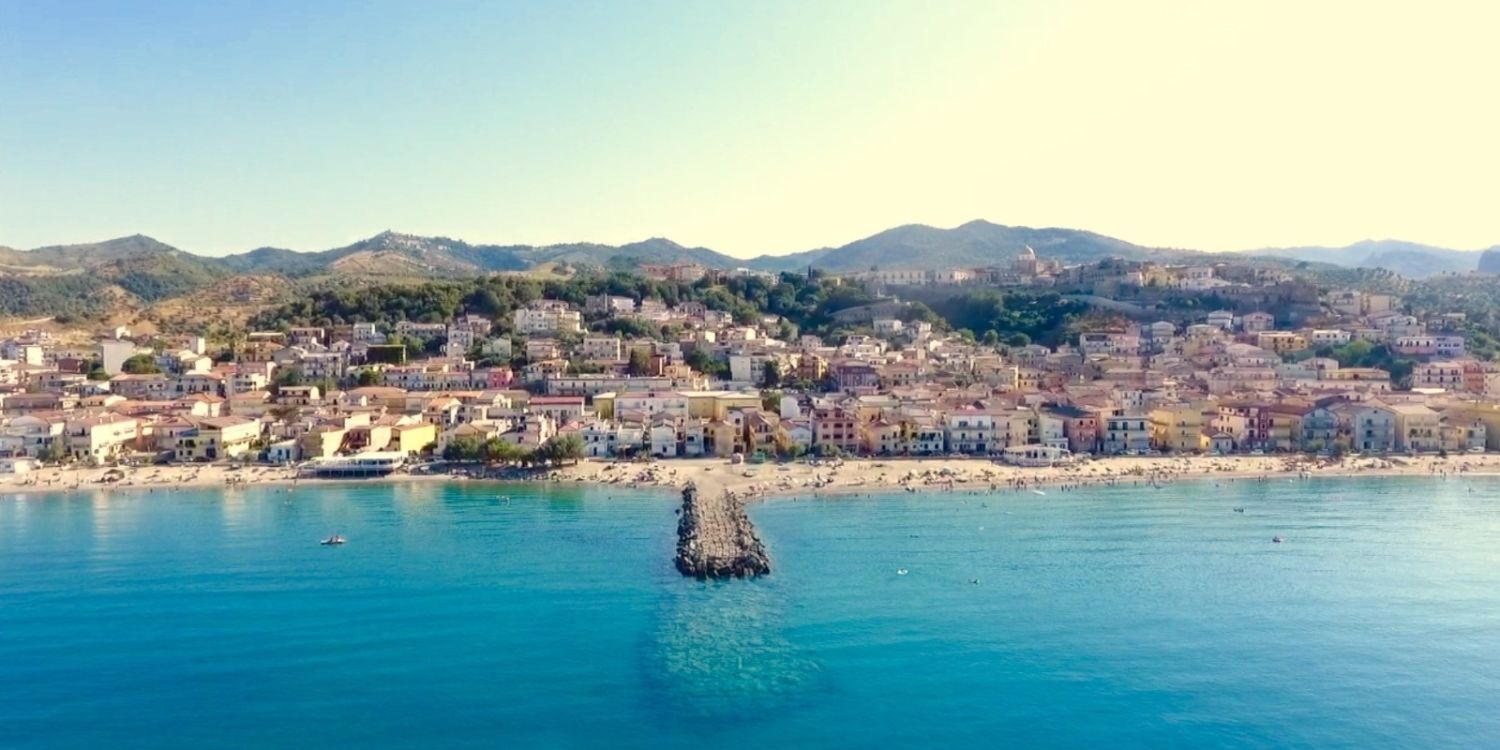
Cariati Marina is the part of the town that runs along the coast and can be reached from the old centre, with a walk of about one kilometre.
The main attraction of Cariati Marina is undoubtedly the crystal-clear sea that washes a beautiful pebble and sandy beach.
Cariati Beach has received several awards for the quality of its waters and the services offered, especially to families with children.
In Cariati Marina, in addition to enjoying the sea, you can stroll along the promenade and the marina.
There are also buildings of cultural interest like the Venneri Castle, a fortified 18th-century noble residence, and the ancient Church of Madonna delle Grazie.
Finally, in the Marina area, there is also the important archaeological site where a Brezia Tomb, a chamber tomb from 330 BC, was discovered in 1978.
This was the tomb of an Italic warrior from the Brettii, an ancient population who inhabited Calabria at the time of the Greek invasions.
What to do in Cariati: cultural events, festivals and religious feasts
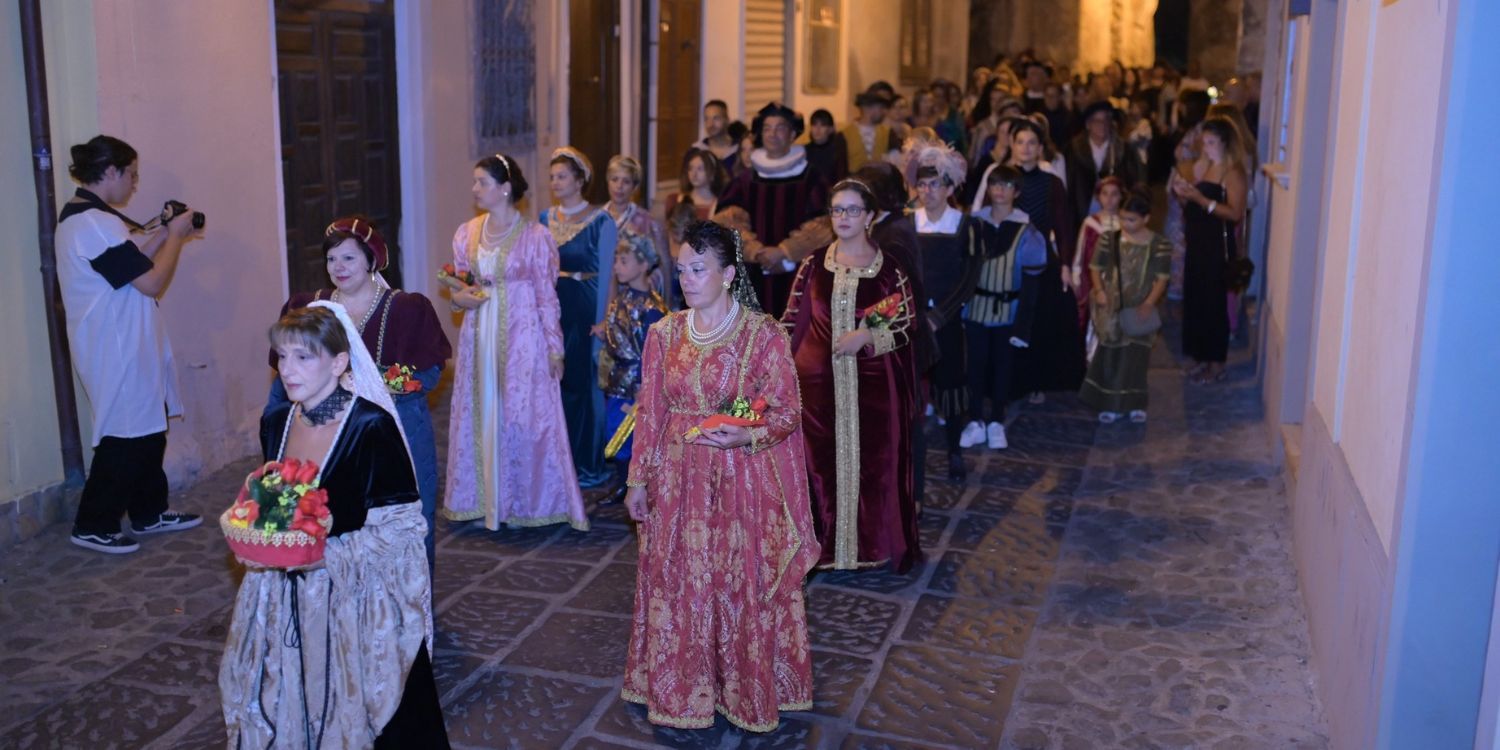
Important and popular cultural events take place in Cariati throughout the year.
The summer is livened up by a rich calendar of events dedicated to entertainment and culture. Very impressive is the piano concert that takes place on 11 August at dawn by the sea.
In winter, the Christmas markets in the Borgo are not to be missed.
Festivals and religious celebrations are much-loved events for the Cariati people, who participate with devotion and sense of belonging.
During these events, devotion, flavours and local traditions mix and create a unique atmosphere.
Popular religiosity is intense, and religious celebrations are strongly connected to history.
The people of Cariati are devoted to three saints: San Cataldo Vescovo, San Leonardo and San Rocco.
San Cataldo bishop is celebrated on May 10. St. Cataldo is the city Protector. His cult was ‘imported’ by the fishermen of Cariati from Taranto, a maritime city in Apulia that has St. Cataldo himself as its patron saint.
San Leonardo, the patron saint of Cariati, is celebrated on November 6, and his cult spread at the time of the Turkish and barbarian raids that attacked the town several times and kidnapped many citizens.
The relatives of the kidnapped turned to St Leonard because he was attributed with the power to free innocent prisoners.
During the celebrations of these two saints, religious processions are held through the streets of the old town, as well as civil and secular events.
Another important celebration is on August 16, in honour of St Roch, a saint much venerated by the population.
San Rocco procession takes place along the seafront and is very evocative. The community participates in large numbers with songs and prayers.
Finally, let us mention the celebration on 8 September, dedicated to Our Lady of Graces, venerated in the ancient church of the Marina.
Cariati is not only faith. It is also a gastronomic paradise.
During the year, there are festivals, and you can taste typical local products such as olive oil, wine, traditional sweets, fish, and local and rural productions and delicacies.
If you visit Cariati in the summer, you can participate in the famous Sagra del pesce azzurro (festival of blue fish), an unmissable event for specialities and typical fish dishes.
The illustrious personalities of Cariati
The town of Cariati, in various historical periods, has contributed to Calabrian and national culture.
Among the illustrious Cariatians, we should first mention Stefano Patrizi, an able jurist and salient figure in 18th-century southern culture.
In addition to being a law expert, he was a lecturer in Feudal Law at the University of Naples and an esteemed man of letters.
His numerous legal writings, his thoughts and his ideas contributed to the modernisation of the Bourbon state by emphasising the importance of the secularity of the state and working to free southern society from the feudal system and ecclesiastical politics.
Another illustrious Cariatese from the first half of the 20th century was the political journalist Gaetano Natale. He dedicated his life to journalism, which he only abandoned during the fascist period due to the restrictions the regime imposed on freedom of the press.
He was the editor of well-known national newspapers and a great friend of statesman Giovanni Giolitti, one of the most influential Italian politicians of the 20th century.
He wrote a highly regarded historical-political biography about Giolitti, his best-known work, published in 1949. After the end of World War II, he resumed his journalistic activities and, from 1947 until his death, was president of the parliamentary press.
Among the famous Cariatians of the 20th century, we also mention the philosopher and historian of philosophy, Giovanni di Napoli, who was a lecturer in the History of Italian Philosophy at the University of Rome. He published numerous philosophical essays, some of which were awarded literary prizes.
Finally, we cannot forget Marco Venneri, a man of letters and professor at the Cariati seminary until 1935. His life was simple and dedicated to studies, teaching and culture.
While working at the Cariati seminary, he founded an Academy of Music and Poetry, contributing to the artistic-literary education of seminarians.
He held various positions of responsibility, including that of the first mayor of Cariati in the 20th century.
The gastronomy and typical products of Cariati
Cariati has a long and rich culinary tradition. If you ask a Cariati inhabitant which typical dish to try, he will suggest "ghiotta alla cariatese", a soup made with fish, cooked with tomatoes and peppers, and accompanied by bread.
Ghiotta is a poor, traditional dish eaten by fishermen's families.
Another typical and popular dish in this area is ‘alici scattiate’. A poor dish, easy to make and very tasty as it is prepared with a typical Calabrian ingredient: red chilli pepper!
Among the many other local delicacies, we mention aubergines stuffed with anchovies and olives and salted Sardella, an evolution of the fish sauce loved by the Romans: garum.
Salted pilchard is also well known abroad and is called ‘the Calabrian caviar’. Sardella is spread on slices of bread or on a rustic pizza called ‘pitta ccu’ r'i jiti'.
‘Pitta ccu’ r'i jiti' is a leavened dough flattened with the fingers that, once seasoned with Sardella, is baked in the oven.
Among the gastronomic specialities are traditional sweets, ‘crustuli’, 'crispedde', 'fusiddi' in particular.
They are simple and tasty sweets, fried with olive oil. They are prepared for Christmas and important family occasions such as weddings, engagements, graduations and births.
Do not forget to try the delicious Calabrian citrus ice cream in a Cariati ice cream parlour!
The main typical ingredients of the area are extra virgin olive oil and wine. Oil mills around Cariati produce a classic and aromatised excellent extra virgin olive oil used to season and flavour traditional Cariatese dishes.
Our advice is to stop in a restaurant in the old village and discover the authentic flavours and culinary traditions of Cariati!
How to reach Cariati
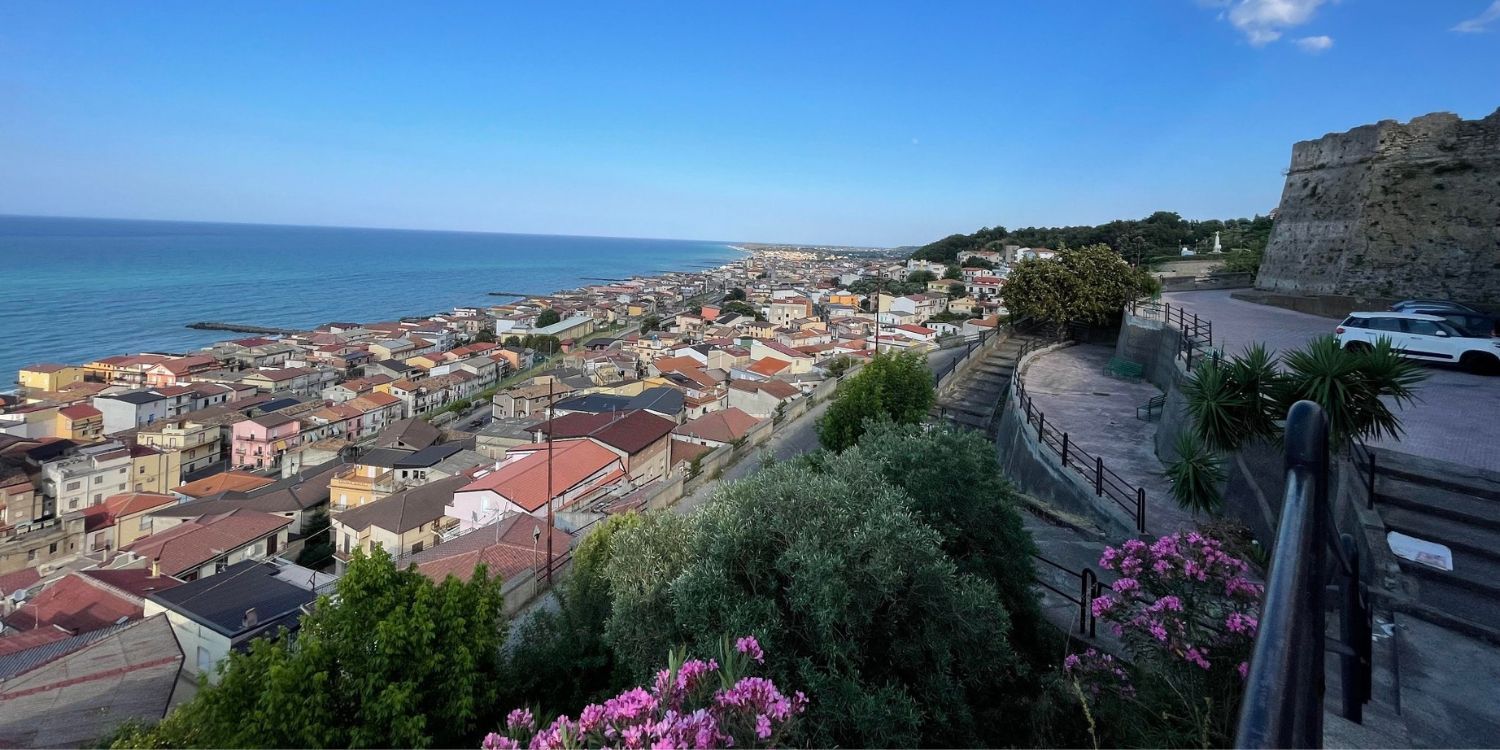
Cariati can be reached by car and train, and the nearest airports are Crotone, 60 km away, and Lamezia Terme, 150 km away. Lamezia Terme is the main airport in Calabria and operates national and international flights.
You can reach Cariati by car via the Adriatica motorway to the Taranto exit and continue on the SS 106 Ionica ( direction Reggio Calabria) until km 299.3.
Alternatively, you can take the "Sole" motorway (Milan-Naples), continue on the Salerno-Reggio Calabria motorway to the Sibari Spezzano exit, and then take the SS 106 Ionica in the direction of Reggio Calabria to km 299.3.
Cariati has a train station. There are several connections from Reggio Calabria, Lamezia Terme, Cosenza and Catanzaro Lido. The fastest solutions, with fewer changes, are those from Cosenza and Catanzaro Lido.
What to visit around Cariati
Not only Cariati but also its surroundings will surprise you with their beauty and historical-natural attractions! You will go through ancient villages, historical and cultural treasures and enchanting views.
The first place we recommend you in the surroundings of Cariati is Rossano, which will captivate you with its picturesque medieval old town.
At the Museo Diocesiano e del Codex of Rossano, you can see a precious 6th-century Greek illuminated manuscript that contains the texts of the gospels of Matthew and Mark.
This is one of the oldest illuminated manuscripts of the New Testament, which, due to its beauty and cultural and historical importance, was recognised as a UNESCO World documentary heritage in 2015.
Rossano is also home to countless beautiful beaches.
History lovers can visit the important archaeological site of Sybaris, one of the most important cities of Magna Graecia, founded around 730 BC and located one hour's drive from Cariati.
The archaeological park shows the remains of ancient Sybaris and two other cities (Thurii and Copiae), founded in the same place after the destruction of Sybaris.
Thurii was founded by the Greeks, and Copiae was a Roman colony. The archaeological site also includes the museum of the Sibaritide, which collects all the artefacts found in this area, the Sibaritide.
And after the cultural visit, the beaches of Marina di Sibari and the Pollino mountains await you!
In Calabria, we have a crystal clear sea and beautiful peaks!
From Cariati, besides the many beaches and coves of the Saracen coast, you can reach Sila Park and Pollino Park.
Among villages, lakes and forests, you can breathe pure air, walk surrounded by beautiful landscapes and enjoy the unspoilt nature of Calabria!
About the author
Written on 20/09/2024

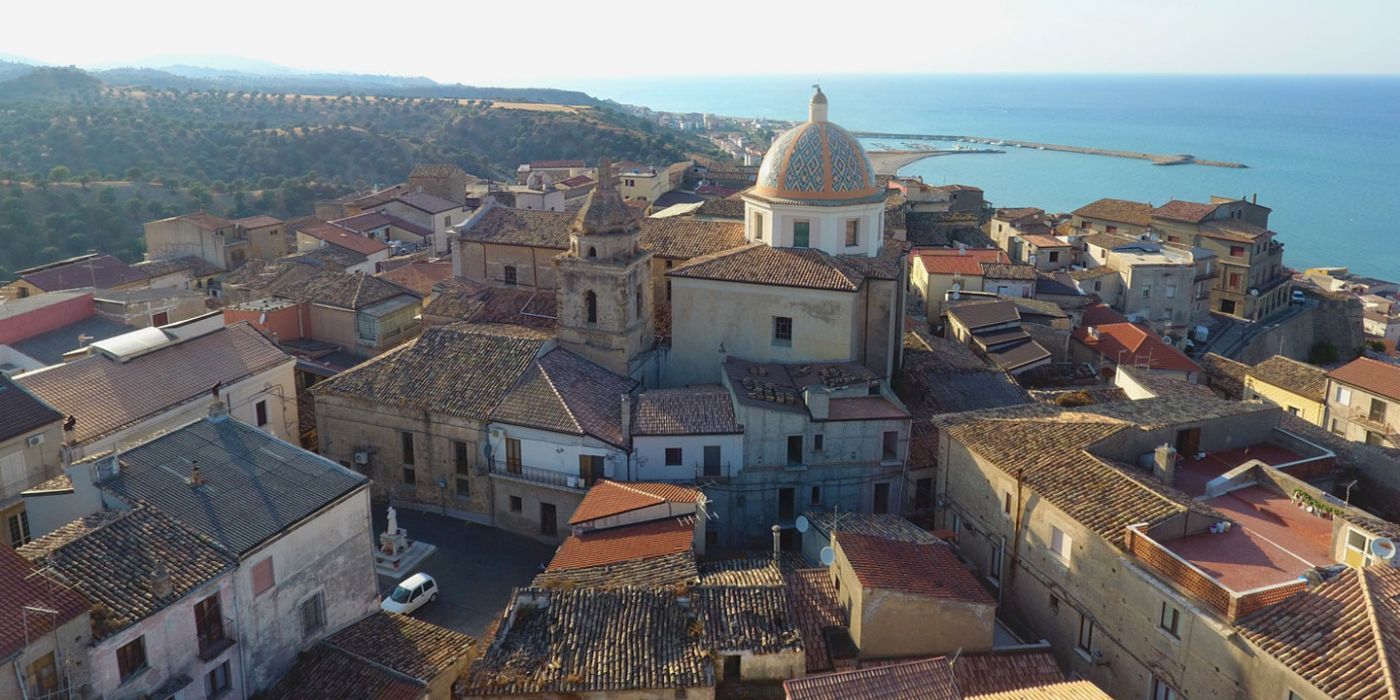

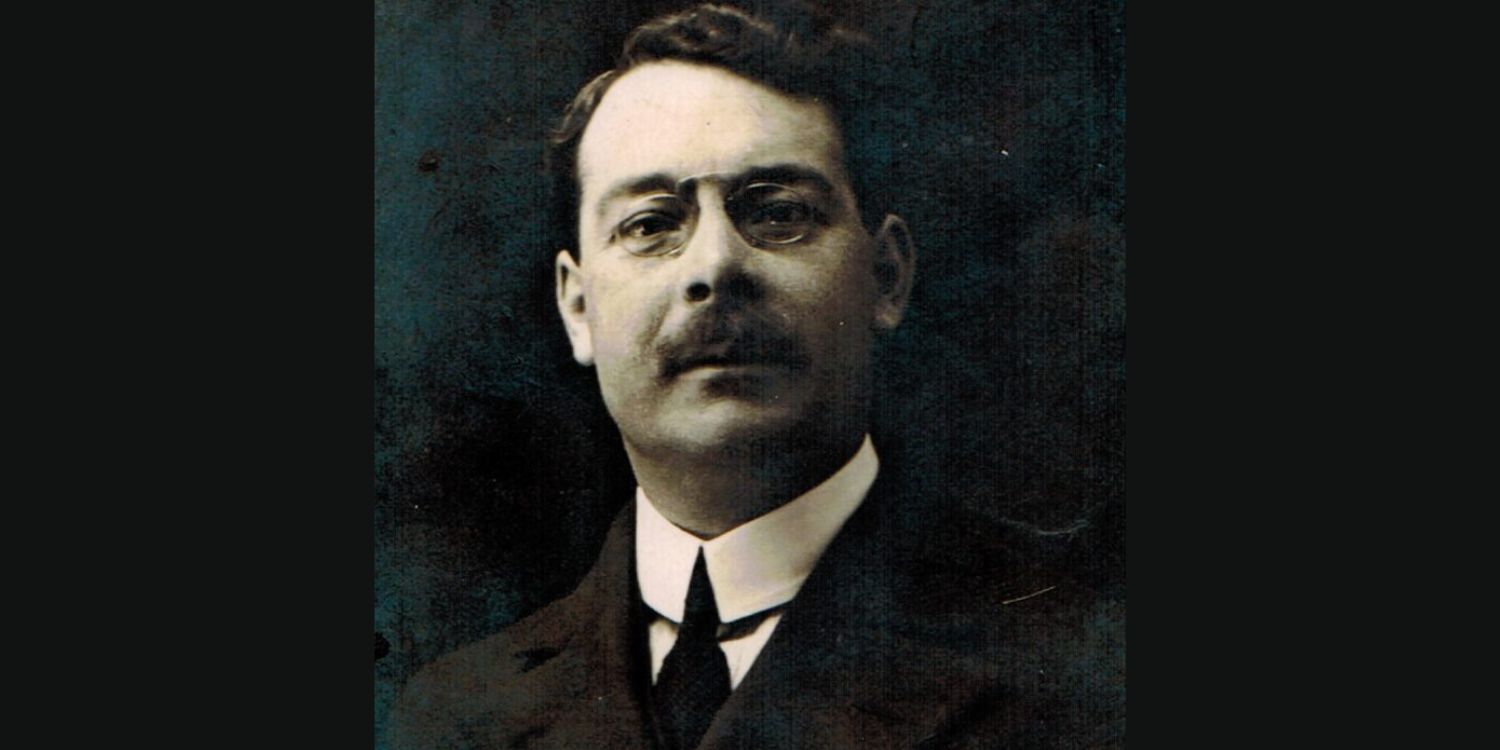
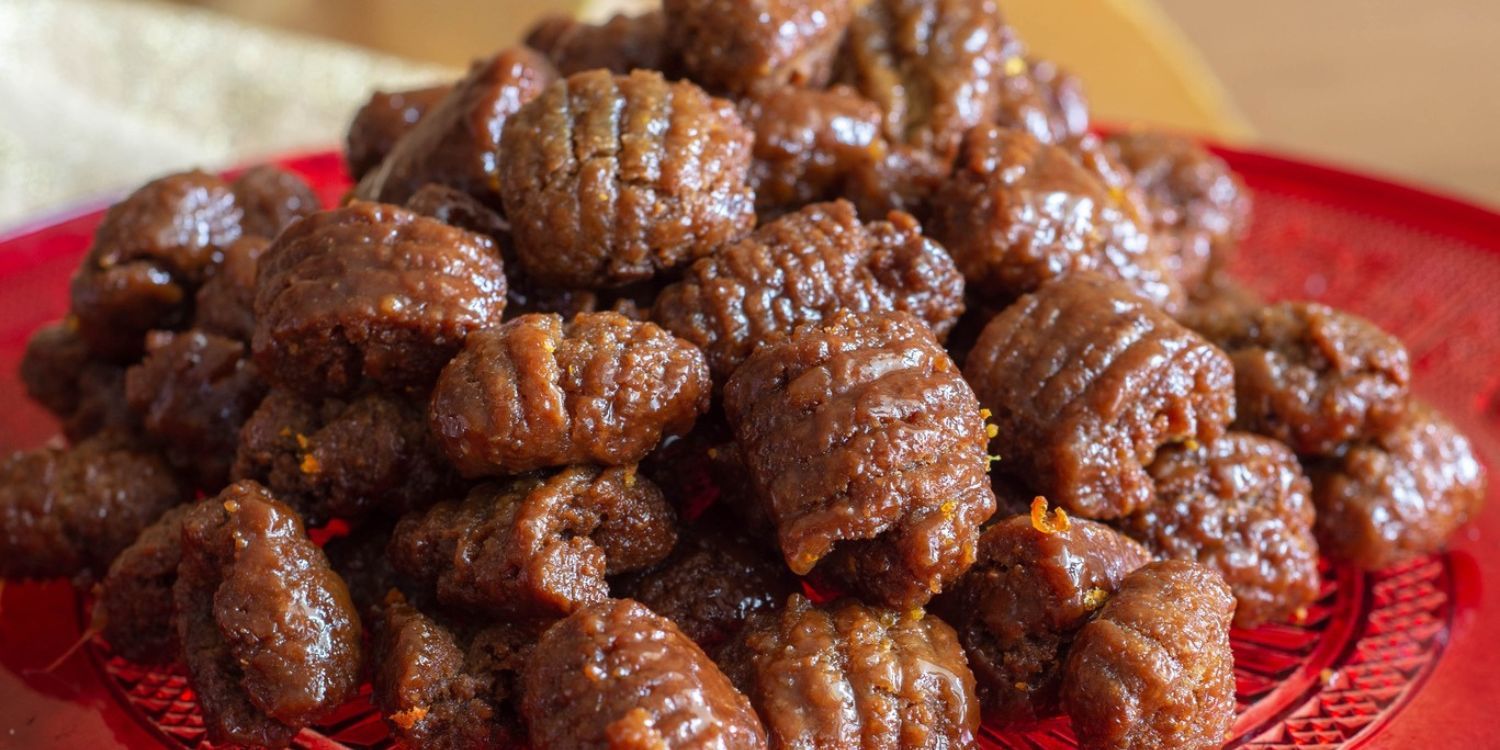


Ilaria Capatti
Discover Cariati, a picturesque medieval village overlooking the Ionian Sea: history, ancient traditions, crystal clear sea and tasty flavours!